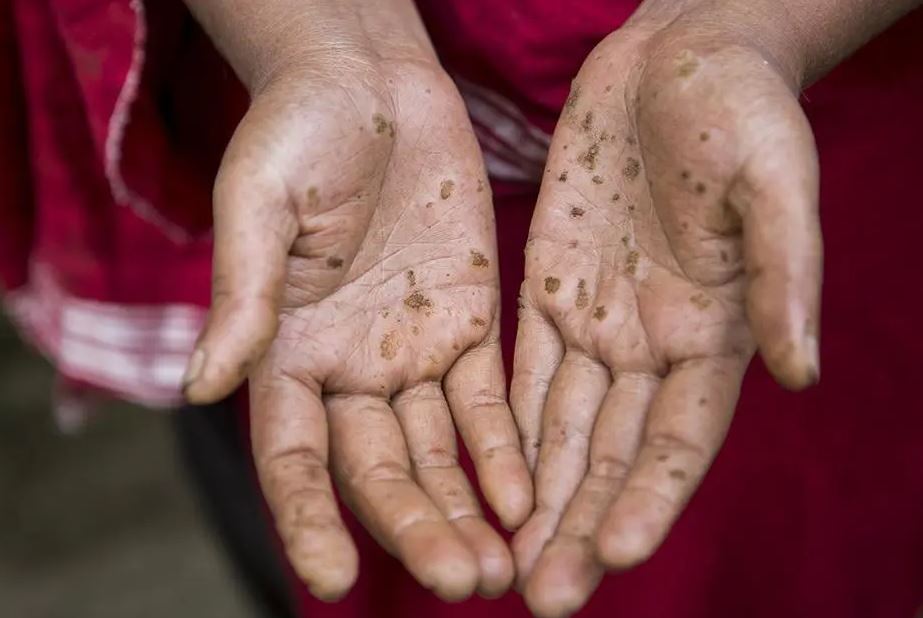
Published :
Updated :

The presence of arsenic in almost all regions of the country is no recent find. It was more than 20 years ago when the dreaded arsenic was found to have emerged as a health crisis in many parts of the country. Arsenic in alarmingly high levels was detected in the ground water of 59 out of the 64 districts. The poisonous effects of consumption and even use of arsenic-contaminated water in household chores called for urgent action. But there was no ready solution for the government to stop the menace from spreading and taking new locations under its clutch. The menace was more talked about than actions taken to address it.
It took a while for the government to act in line with anti-arsenic practices in other countries. Millions of tube-wells were tested and hundreds of thousands of safe ones installed to avert a major health crisis. However, over the years, the talks on curbing arsenic menance have remained much muted as if the threats have all but disappeared. But the latest study reveals that the situation now is scarier than it was initially thought to be.
A study by the Human Rights Watch some time ago reveals that the situation now is scarier than it was initially thought to be. A silent killer, arsenic manifests itself over time in the form of skin lesions, cancer, and cardiovascular and lung diseases. The study says nearly 20 million people are still drinking arsenic-laced water in Bangladesh. Prevalence of the menace has not declined, the study says, although millions of wells were tested and thousands of safe ones installed to avert a major health crisis. The study further adds that around 43,000 Bangladeshis die each year from arsenic-related diseases.
According to another study, in recent decades, of the about 164 million population, some 35-77 million people in Bangladesh have been exposed to toxic levels of arsenic from drinking water. The sole dependence on groundwater for drinking purposes in rural Bangladesh, which represents nearly 75 per cent of total population, has made the situation much worse.
There are conflicting reports regarding the actual state of arsenic contamination in the country. Initially, way back in 2003, there were some well targeted moves to ascertain the situation and some precautionary steps were also taken. According to government claims, 5.0 million rural tube wells were tested and painted green or red to indicate their safe or unsafe types respectably. However, how far this action was able to keep people away from drinking or using the unsafe tube wells and whether that helped mitigate the problem has not been assessed as yet. It is indeed surprising that whatever alertness and mitigation efforts were in place some twenty years ago seem to have dissipated for the most part.
Arsenic is found in water from shallow tube wells across huge swaths of rural Bangladesh. Although deep tube-wells can often reach groundwater of better quality, government programmes to install sufficient new wells do not seem to have worked as yet. Researchers say that mass arsenic contamination can be substantially contained by drilling wells deeper than 500 feet. If this be the case, wells and other types of safe water projects to supply water to the worst exposed 20 million people should be provided without delay. The southern part of the country is reportedly the worst victim.
Several techniques have been proposed to remove arsenic from groundwater including precipitation, coagulation/filtration, adsorption, ion exchange, lime treatment, oxidation, and membrane filtration. According to experts, if nanomaterials are used, it is possible to effectively destroy microorganisms, adsorb arsenic and fluoride, remove heavy metals and degrade pesticides usually found in water. Researchers have looked at new methods to synthesise iron oxide/hydroxide/oxyhydroxide compositions in the laboratory and used them for water purification. A product called AMRIT, developed by the Indian Institute of Technology at Madras, is an affordable water purification technology based on advanced materials, which has been validated for national implementation in India. The technology can remove several anions, especially arsenate and arsenite (two common species present in arsenic-contaminated water) and fluoride from water. Currently, this technology is delivering arsenic-free water to about 10,00,000 people in India every day.
To carry out anti-arsenic drive meaningfully, it is of high importance that the government revisited its programmes in the light of the achievements and failures. This will help evaluate and monitor the present situation and at the same time reshape and revise, where necessary, programmes to effectively address the problems in vulnerable locations. It is clear from the scope and nature of the arsenic problem that actions to mitigate it have to be sustained for long — a continuous battle to say the least.


 For all latest news, follow The Financial Express Google News channel.
For all latest news, follow The Financial Express Google News channel.